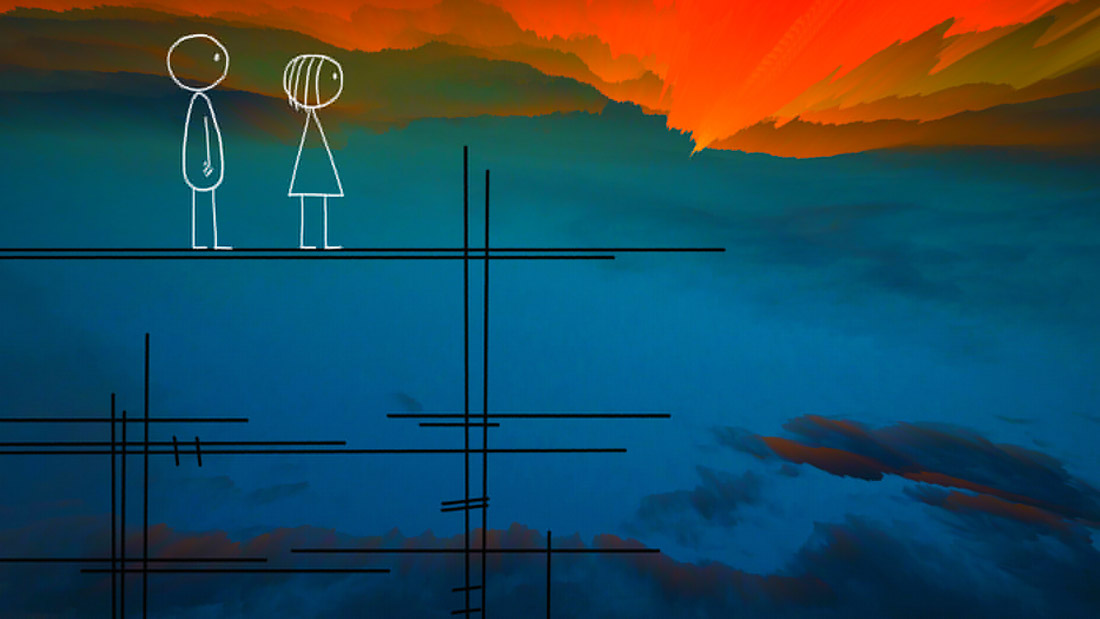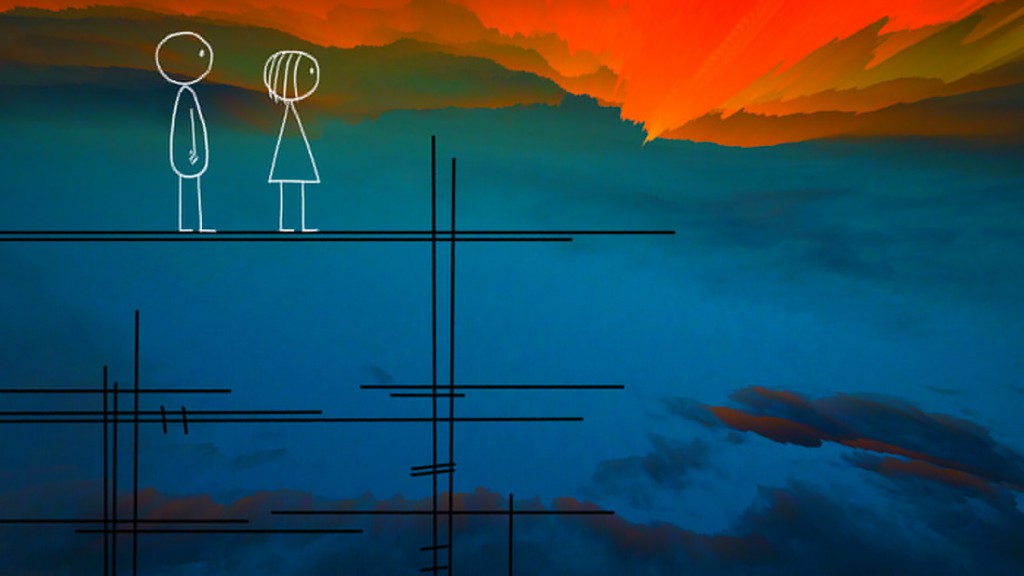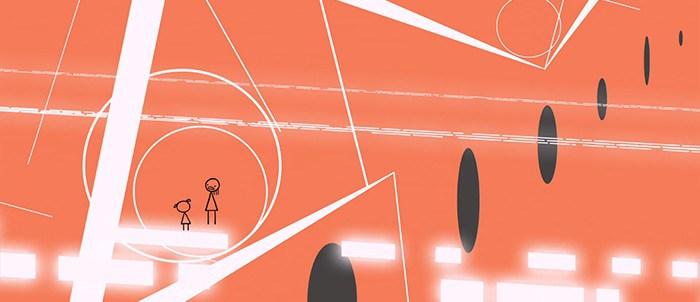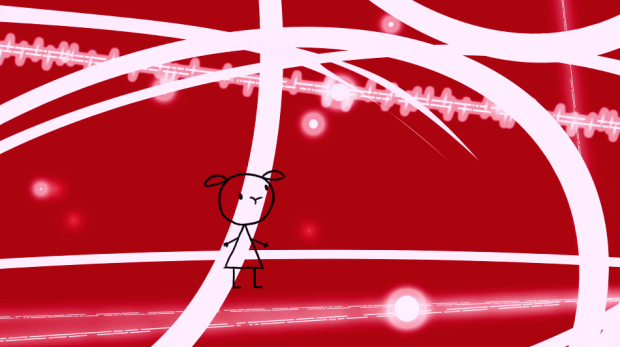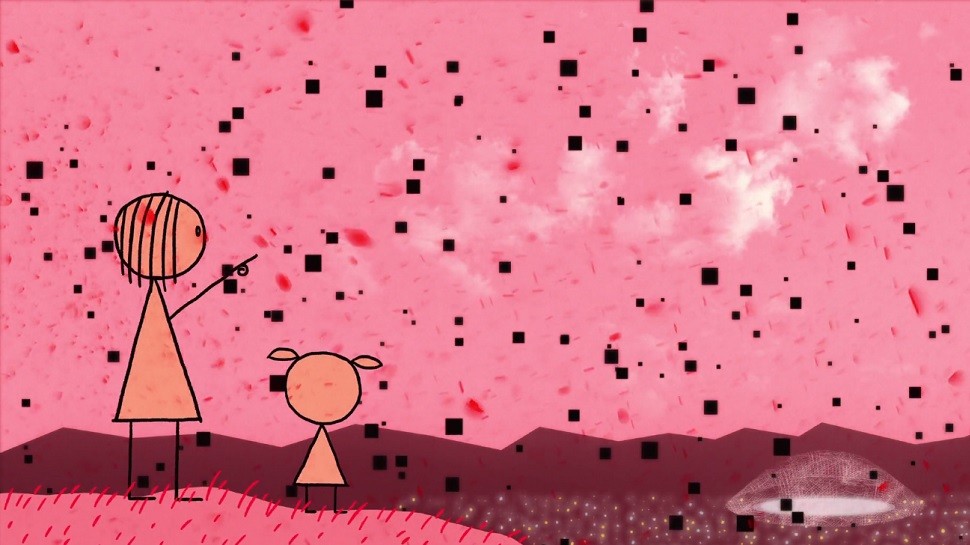World of Tomorrow
Written and directed by Don Hertzfeldt
USA, 2015
“You are alive and living and the envy of all of the dead.”
There’s a big irony to this beautiful quote in Don Hertzfeldt’s animated short film World of Tomorrow. It’s delivered from Emily 3.0 to Emily Prime, a clone from the future to a toddler version of herself, who in Emily 3.0’s present is not truly living at all. What’s more, both Emilys are crude stick figure drawings.
World of Tomorrow is a beautiful, funny, surreal, cynical, and ultimately touching animated short about a little girl shown the distant future by a clone of her older self. Humans and clones now live together in the “outranet”, a neural network of thoughts and ideas that has replaced the Internet and provided all of existence with windows into the past. Those too shy to face society have disappeared into “safe infinity”, a realistic extension of the world that’s more than just a “how we live now” allegory. Watching the creativity on display and getting this glimpse into this particular future helps us better appreciate our memories and our present.
World of Tomorrow won the Sundance Grand Jury Prize for a short film at this year’s Sundance, then won both the Grand Jury and Competition Awards for an animated short at SXSW, and it is now available for VOD rental on Vimeo. That the short’s acclaim has reached such lofty heights is itself ironic when compared to Hertzfeldt’s past work, one of the first viral videos ever, and by far the most bizarre Couch Gag The Simpsons has ever staged. His debut feature however, the Netflix streaming It’s Such a Beautiful Day, took those crude drawings and ballooned their meaning to Terrence Malick’s proportions.
Why should a short film by an animator reserve the same attention as a full feature? Because within World of Tomorrow and It’s Such a Beautiful Day there are more ideas in their brief running times than many features combined can muster. To echo Tom Clift and his incisive overview of Hertzfeldt’s short film career prior to World of Tomorrow, Hertzfeldt is one of the most idiosyncratic and stylistic filmmakers working today.
Hertzfeldt’s deceptively simple animation style in his early work served to heighten his absurdist deadpan humor, the morbidly cartoonish acts of violence, as well as his more mundane observations of life. In World of Tomorrow it does all that and more. It’s the director’s knowing wink and check on the ambitions he has on display, as well as a creative vision of a future unlike anything with our typical ideas of time, space or dimension.
World of Tomorrow is filled with blaring, bright colors and stark geometric shapes that don’t form any single structure or place specifically. Hertzfeldt shatters our expectations of space and time and finds an apt visual vessel for his surreal meditations on the future. As clones, perhaps never before have Hertzfeldt’s stick figure characters been more appropriate. It’s Such a Beautiful Day’s Bill was a character we knew intimately, despite him being only a few lines and squiggles, but here their physical appearance is more resonant because we know them to be of a time that’s not our own.
It’s Such a Beautiful Day felt like a dangerously trippy visual essay, littered with the crudely simple animation that moved faster than the narration accompanying it. One sequence involves the narrator reflecting on people who have died through history. “He was a quiet, unassuming young man eating an onion one day when he was cut in half by a train.” “She died at 8 of yellow fever…and catching on fire.” “He died making jam…and persecuting Jews.”
World of Tomorrow has that same brand of absurdist prose worthy of Thomas Pynchon, like how the moon is filled with robots writing “depressed poetry”, or that Emily once opened an art gallery of anonymous memories. But Hertzfeldt has here integrated those ideas into a story and an image of the future of how people live, work, and love, rather than just a tapestry of random, if beautifully absurd, ideas.
Some would argue the transformation for Hertzfeldt from a viral, experimental film student to profound auteur began with his short The Meaning of Life. It’s a charming short with aspirations and swells the size of Kubrick, but it’s ultimately a one-note idea. World of Tomorrow zooms in on that evolutionary process highlighted in The Meaning of Life, and as random and as silly the film is at times, it comes up with an actual answer that’s not just gibberish.
“I am proud of my sadness because I know I am alive,” the clone Emily explains. World of Tomorrow features an incredible sequence in which Emily tells a story about a clone without a brain displayed in a museum. The clone was an empty shell, unable to think or acknowledge anything, but still it grew taller and older, until it died and was moved off display. People watched it, named it David, grew to love it intimately, and confided with it their secrets.
This story is not the mundane observation of life Hertzfeldt became known for throughout It’s Such a Beautiful Day. But it has infinitely more insight into how we as society relate to the world and to people, and as drama it’s devastatingly saddening and serene.
That’s not to say however that World of Tomorrow doesn’t share Hertzfeldt’s distinct brand of morbid humor. The film is punchy and rapid in its presentation of ideas. In Emily Prime it finds a hilariously childlike perspective to everything that would otherwise have too much of an air of importance.
But more significantly, seeing this from the girl’s perspective is to appreciate it on a level we can’t fully grasp. At the end of 2001: A Space Odyssey, witnessing a higher power and stage of evolution resulted in a rebirth, symbolizing that we can’t in our present state truly know what’s beyond. Emily can’t begin to process everything her older clone is showing her, but it burns a memory in her mind and shapes her future.
World of Tomorrow is about finding solace in those memories of our past selves. Hertzfeldt’s film can at times feel morbid and cynically futuristic, acknowledging that we’re all doomed in the end (at one point, people trying to escape Earth get teleported to above the atmosphere and die in what looks like a glimmering star shower back on the ground). But there’s something utterly human and optimistic about knowing you’re alive and have a future ahead of you today.
— Brian Welk

